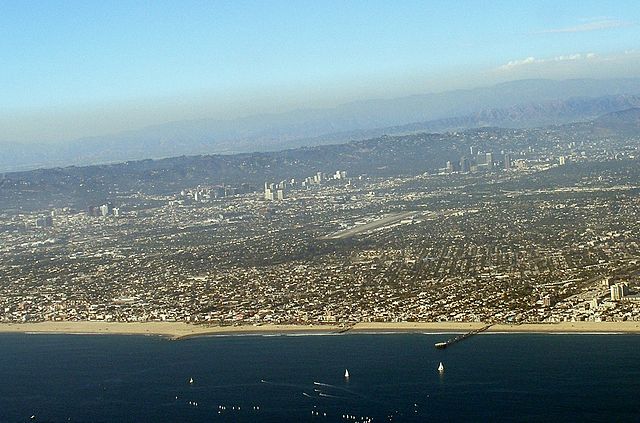Playa Vista is a neighborhood in the Westside area of Los Angeles, California, United States. The area was the headquarters of Hughes Aircraft Company from 1941 to 1985 and the site of the construction of the Hughes H-4 Hercules "Spruce Goose" aircraft. The area began development in 2002 as a planned community with residential, commercial, and retail components. The community attracted businesses in technology, media and entertainment and is part of Silicon Beach.
Playa Vista from the south, with Bluff Creek in foreground
Bluff Creek
Allée of Western sycamore (Platanus racemosa) at Hercules East Campus
The LMU Fire Road along the Westchester Bluffs above Playa Vista is a popular jogging track.
Westside (Los Angeles County)
The Los Angeles Westside is an urban region in western Los Angeles County, California, United States. It has no official definition, but sources like LA Weekly and the Mapping L.A. survey of the Los Angeles Times place the region on the western side of the Los Angeles Basin south of the Santa Monica Mountains.
The Westside as seen by aircraft departing Los Angeles International Airport
The view from the Getty Center, centered on the Westside as the 405 goes through the Sepulveda Pass in the Santa Monica Mountains and down through the city






